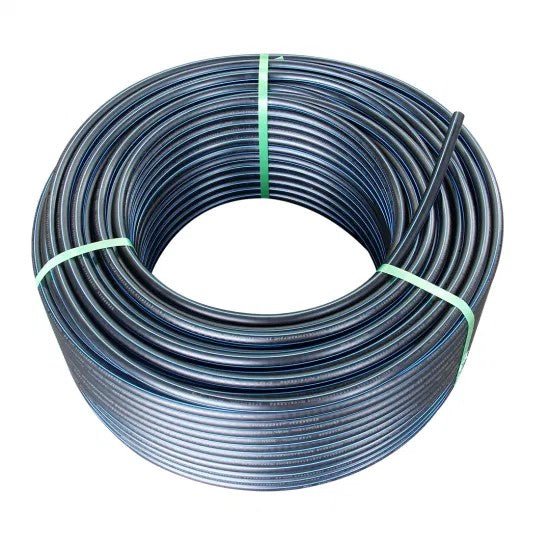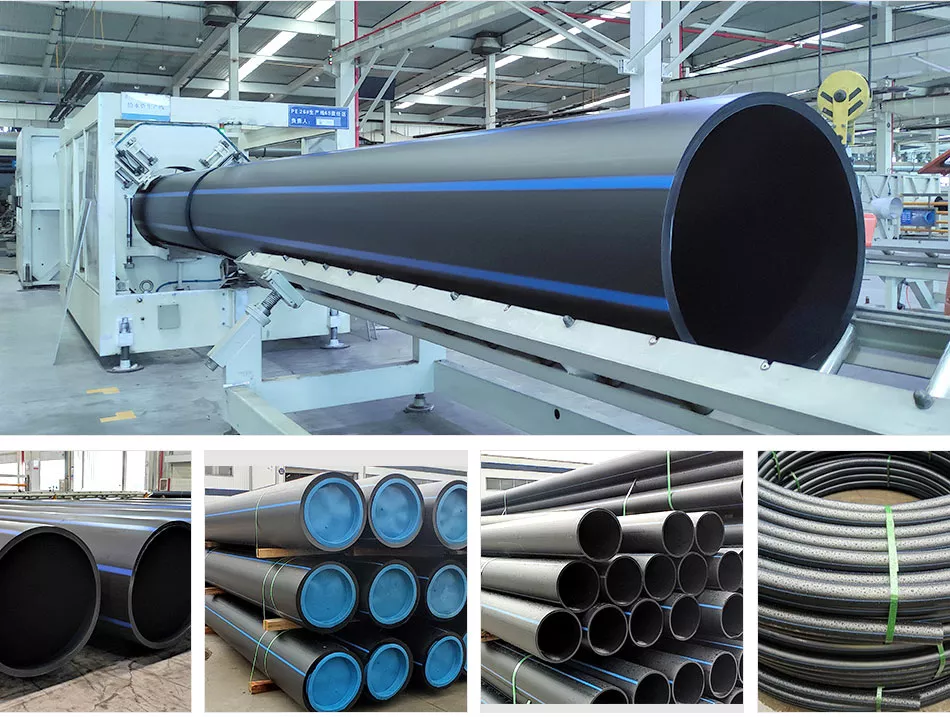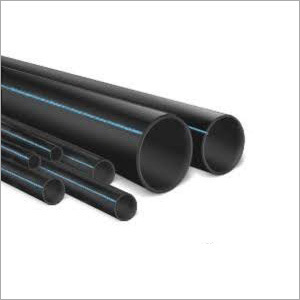Benefits of Choosing custom hdpe pipe manufacturing Midland TX for Unique Requirements
Check Out the Production Process Behind High-Quality HDPE Pipe and Its Applications
The production process of top quality HDPE pipelines is complex and systematic. It begins with the option of resources that improve performance. Following this, ethylene undertakes polymerization to develop material, which is then formed with extrusion. Quality control is critical, ensuring that the end product meets rigid standards. The journey of HDPE pipelines does not end with manufacturing. Their applications throughout different sectors reveal a more comprehensive significance worth checking out.
Understanding HDPE: Characteristics and Advantages

High-density polyethylene (HDPE) is a flexible polycarbonate recognized for its sturdiness and resistance to different environmental variables. This material shows outstanding tensile toughness, making it suitable for requiring applications. Its low-density structure adds to a lightweight product, assisting in ease of managing and installment. HDPE additionally showcases exceptional resistance to chemicals, which lessens deterioration when subjected to rough materials.
The product's reduced dampness absorption better boosts its longevity, making it suitable for usage in pipes and storage space containers. Furthermore, HDPE is immune to ultraviolet (UV) radiation, making sure that items preserve their integrity even when revealed to sunshine. Its adaptability allows for the creation of intricate forms without jeopardizing strength. The environment-friendly nature of HDPE, usually stemmed from recycled materials, includes to its charm, promoting sustainable techniques in manufacturing. On the whole, these residential or commercial properties and benefits make HDPE a favored choice for various commercial and customer applications.
Resources Option for HDPE Production
The option of raw materials for HDPE production is important to verify the end product fulfills the preferred specifications and top quality requirements. High-density polyethylene (HDPE) is mainly created from polymerized ethylene, originated from nonrenewable fuel sources such as natural gas or unrefined oil. The quality of these feedstocks greatly affects the mechanical and thermal properties of the final HDPE.
Additives likewise play a substantial role in enhancing HDPE's efficiency, including anti-oxidants, UV stabilizers, and colorants, which improve resilience and resistance to ecological variables. The selection process have to think about not only the chemical composition of the raw products yet also their processing attributes to assure reliable manufacturing.
Moreover, the sourcing of resources must prioritize sustainability and compliance with ecological policies, as accountable techniques are critical in today's market. Eventually, mindful raw material option lays the foundation for creating high-grade HDPE pipelines appropriate for varied applications.
The Extrusion Process: Shaping HDPE Pipe
The extrusion process plays a vital role in shaping HDPE pipes, beginning with precise material preparation techniques that guarantee perfect flow and consistency. Equally important is the design of the die, which directly affects the last dimensions and surface high quality of the pipeline. With each other, these variables add significantly to the performance and high quality of HDPE pipe manufacturing.
Material Preparation Strategies
Efficient manufacturing of HDPE pipelines starts with careful material preparation techniques, specifically the extrusion procedure. During this stage, high-density polyethylene material is very first dried to remove wetness, guaranteeing excellent circulation characteristics. The material is after that fed into the extruder, where it undergoes heating and melting, changing right into a viscous state. This heating procedure is very carefully managed to maintain the product's stability and performance. The liquified HDPE is required via a die, forming it into a constant pipe form. Appropriate temperature management throughout extrusion is crucial, as it directly influences the product's residential properties and the end product high quality. As soon as shaped, the HDPE pipe is cooled down and reduced to defined lengths, all set for subsequent handling and applications.
Die Style Value
Precision in die style plays a vital function in the extrusion process of HDPE pipelines. The die offers as the final shaping tool, directly affecting the pipeline's dimensions, wall surface thickness, and surface area coating. A well-designed die warranties uniform product flow, minimizing defects such as irregularities and weak places. The geometry of the die should be maximized to accommodate the particular residential properties of HDPE, including its thickness and thermal behavior during extrusion. Additionally, the cooling rate of the material as it goes through the die can significantly affect the pipe's structural stability. Consequently, purchasing innovative die innovation is important for producers intending to produce premium HDPE pipelines that meet market standards and client assumptions.
Quality Assurance Procedures in HDPE Production
Different aspects influence the top quality of HDPE pipeline production, reliable top quality control procedures are important to guarantee consistency and reliability in the last item (Pipe Supplier American Plastics Midland). Trick quality assurance practices consist of strenuous product evaluation, validating that the raw polyethylene fulfills established requirements for pureness and density. During the extrusion procedure, criteria such as temperature level, stress, and cooling time are very closely checked to maintain dimensional precision and structural integrity
In enhancement, post-production testing is crucial; makers typically perform hydrostatic tests to examine the pipe's stamina and resistance to stress. look at here Visual examinations for surface area problems additionally enhance top quality assurance. Certification from appropriate criteria companies, like ASTM or ISO, provides an added layer of integrity. By executing these complete quality control measures, suppliers can minimize issues, boost efficiency, and guarantee that the HDPE pipes meet the particular demands of various applications, eventually bring about consumer complete satisfaction and trust in the item.
Applications of HDPE Pipeline Throughout Industries
HDPE pipelines are made use of throughout numerous fields due to their longevity and versatility. In water distribution systems, they ensure reliable delivery, while in wastewater management, they offer reputable solutions for waste transport. In addition, farming watering networks benefit from HDPE's resistance to deterioration and versatility, making it an excellent option for contemporary farming methods.

Water Circulation Equipments
A substantial variety of industries depend on high-density polyethylene (HDPE) pipes for reliable water distribution systems. Understood for their resilience and resistance to deterioration, HDPE pipelines are commonly made use of in local water system networks, farming watering, and more information industrial applications. Their lightweight nature helps with very easy handling and installment, decreasing labor prices and time. Additionally, HDPE pipes can suit various pressure levels, making them appropriate for both reduced and high-pressure systems. Pipe Supplier American Plastics Midland. The flexibility of the material enables for seamless assimilation right into existing facilities, lessening the demand for considerable excavation. Furthermore, HDPE's resistance to chemical leaching guarantees that the water provided remains risk-free and clean, making it a perfect choice for preserving the top quality of safe and clean water throughout numerous fields
Wastewater Management Solutions
Efficient water circulation systems likewise lead the way for innovative wastewater management remedies, where high-density polyethylene (HDPE) pipelines play a significant role. Popular for their resilience and resistance to rust, HDPE pipes are perfect for transporting wastewater in numerous setups. Their versatility permits easy setup in intricate settings, reducing the requirement for extensive excavation. Additionally, HDPE's smooth interior surface area decreases friction, enhancing flow prices and performance. These pipes are also immune to chemical leaching, ensuring that impurities do not endanger the surrounding atmosphere. Industries, districts, and therapy facilities progressively rely upon HDPE pipelines for their integrity and long life, making them a preferred gas pipeline repair near me selection for modern-day wastewater management systems. This flexibility highlights the important importance of HDPE pipelines across numerous applications.
Agricultural Watering Networks
Agricultural irrigation networks profit significantly from using high-density polyethylene (HDPE) pipes, which supply efficient and trusted water distribution to plants. HDPE pipes are light-weight, making them very easy to transfer and set up, while their adaptability allows for different arrangements in diverse terrains. These pipes show excellent resistance to deterioration, chemicals, and UV radiation, guaranteeing resilience in harsh agricultural settings. In addition, their smooth indoor surface minimizes rubbing loss, optimizing water flow and reducing energy costs related to pumping. The long life of HDPE pipes, often surpassing half a century, adds to reduce maintenance and replacement costs. Farmers progressively count on HDPE pipelines to boost irrigation performance and promote lasting agricultural practices, ultimately leading to improved crop returns and resource preservation.

Future Patterns in HDPE Pipe Technology
As the demand for lasting and effective facilities expands, innovations in HDPE pipeline innovation are positioned to change different markets. Arising fads include the integration of clever innovations, such as sensors and IoT capabilities, which facilitate real-time surveillance of pipeline conditions, lowering maintenance expenses and stopping leakages. Furthermore, the growth of innovative manufacturing strategies, such as 3D printing, is allowing the production of facility, customized pipe styles that accommodate specific task needs.
The focus on recycling and circular economy techniques is driving the innovation of HDPE pipes made from recycled materials, boosting sustainability. Enhanced jointing techniques, such as electro-fusion and mechanical installations, are likewise enhancing installment performance and integrity. Ultimately, the growing emphasis on environmental regulations is pressing manufacturers to take on greener manufacturing processes, making certain that HDPE pipes not only meet industry requirements yet likewise promote a more sustainable future for infrastructure growth.
Regularly Asked Concerns
Just How Does HDPE Contrast to Various Other Plastic Materials?
HDPE exceeds several various other plastic materials regarding durability, chemical resistance, and adaptability. Its low thickness and high tensile strength make it perfect for various applications, typically exceeding alternatives in both efficiency and durability.
What Are the Environmental Influences of HDPE Manufacturing?
The ecological effects of HDPE manufacturing consist of greenhouse gas exhausts, energy usage, and potential pollution from manufacturing procedures. Additionally, incorrect disposal can cause dirt and water contamination, increasing worries regarding long-lasting ecological impacts.
Can HDPE Piping Be Reused?
Yes, HDPE pipelines can be reused. Numerous centers accept made use of HDPE for processing, transforming it into brand-new products. This reusing adds to sustainability efforts, reducing plastic waste while saving sources and power in the manufacturing cycle.
What Is the Life-span of HDPE Pipeline?

Exactly How Do Temperature Variations Impact HDPE Pipeline Performance?
Temperature level variations substantially impact HDPE pipe performance, affecting flexibility and stamina. Heats can cause softening, while reduced temperatures might trigger brittleness, eventually affecting the pipeline's toughness and suitability for numerous applications in diverse atmospheres.